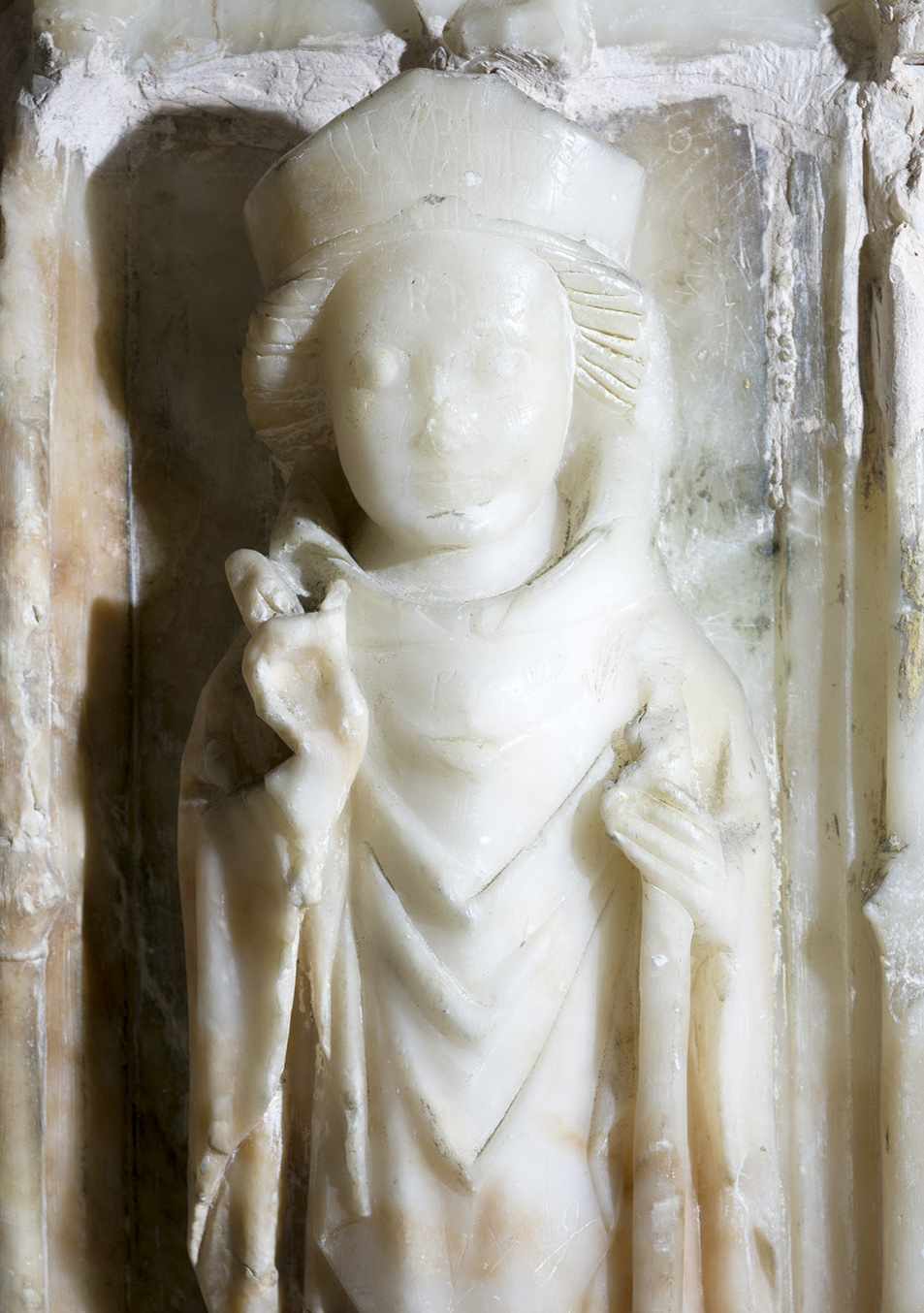Katherine of Alexandria (Catrin o Alecsandria)

Katherine was a popular saint of the later Middle Ages, having suffered martyrdom in the early fourth century. In the Life of Katherine, she is condemned to die on a wheel for her faith by the Roman Emperor Maximinus, but the wheel shatters at her touch and she is subsequently beheaded.
Texts
A Welsh Life of Katherine is found in numerous manuscripts, the earliest of which dates from the fourteenth century.Places
Relatively few churches appear to have been dedicated to Katherine in the medieval period, which does not seem to reflect her popularity in late medieval Wales. This may be explained by the fact that churches already had their dedications by the fourteenth century, and were not always readily altered. Examples include the churches at Criccieth and Llanfaes (Anglesey) and several chapels that have since been lost.A chapel at the Church of St Giles, Wrexham, was dedicated to her and a chantry in Bangor Cathedral was endowed by Rhisiart Cyffin, Dean of the Cathedral c.1475–1502.
The chapel at Milford Haven dedicated to Katherine was replaced by a new church nearby in 1803-8, built as a centrepiece of Charles Greville's new town. Katherine was chosen as the patron of thirteen further Anglican churches in the nineteenth and twentieth centuries in north and south Wales, including the principal town churches in Pontypridd and Gorseinon.
 | Church Dedication |  | Well |  | Placename |  | Landscape feature |  | Modern |  | Text |
1. St Catherine's Chapel, Brecon , Brecon (Dedication)
Details
2. St Catherine's Chapel, Milford Haven , Pembrokeshire (Dedication)
Details
3. St Catherine's Chapel, Rudbaxton , Pembrokeshire (Dedication)
Details
4. St Catherine's Chapel, Tenby , Pembrokeshire (Dedication)
Details
9. Church of St Catherine, Criccieth , Caernarfonshire (Dedication)
Details
12. Church of St Catherine, Llanfaes , Anglesey (Dedication)
Details
15. Church of St Catherine, Granston , Pembrokeshire (Dedication)
Details
23. St Katherine, Granston , Pembrokeshire (Placename)
Details
24. St Catherine's Island, Tenby , Pembrokeshire (Landscape feature)
Details
Show more sites
Further reading
David Farmer, The Oxford Dictionary of Saints (Oxford: Oxford University Press, 2011), 80–1
Nicholas Orme, The Saints of Cornwall (Oxford: 2000), 155–6
J. Cartwright, Feminine Sanctity and Spirituality in Medieval Wales (Cardiff: University of Wales Press, 2008), 149–75
Madeleine Gray, Images of Piety (Oxford: British Archaeological Reports, 2000), 27–30 and further references
Jacqueline Jenkins and Katherine J. Lewis (ed.), St Katherine of Alexandria: Texts and Contexts in Western Medieval Europe (Turnhout: Brepols, 2003)
Images
Surviving examples of medieval images of Katherine are relatively numerous, as she may be identified with her wheel. This includes six examples in stained glass, carved figures on tomb chests at Abergavenny, Beaumaris and Tenby, a standing figure on the tower at Wrexham, and a wall painting from the church at Llandeilo Talybont.Small medieval images from Wales include a ring found at Cymer Abbey, a clay figurine from Newtown; a seal from Mathern and a pilgrim badge found on Newgale beach (Pembrokeshire).
Katherine has continued to be depicted in stained glass since the mid-nineteenth century in Anglican and Roman Catholic churches. Nearly all of these images are simply standing figures, although two scenes accompany the figure in the north porch at Brecon Cathedral: her beheading and an image known as the Mystic Marriage of Katherine with the Infant Christ, in which she receives a ring from Christ, who is seated on Mary's knee.
View images of Katherine of Alexandria on the Imaging the Saints of Wales database


